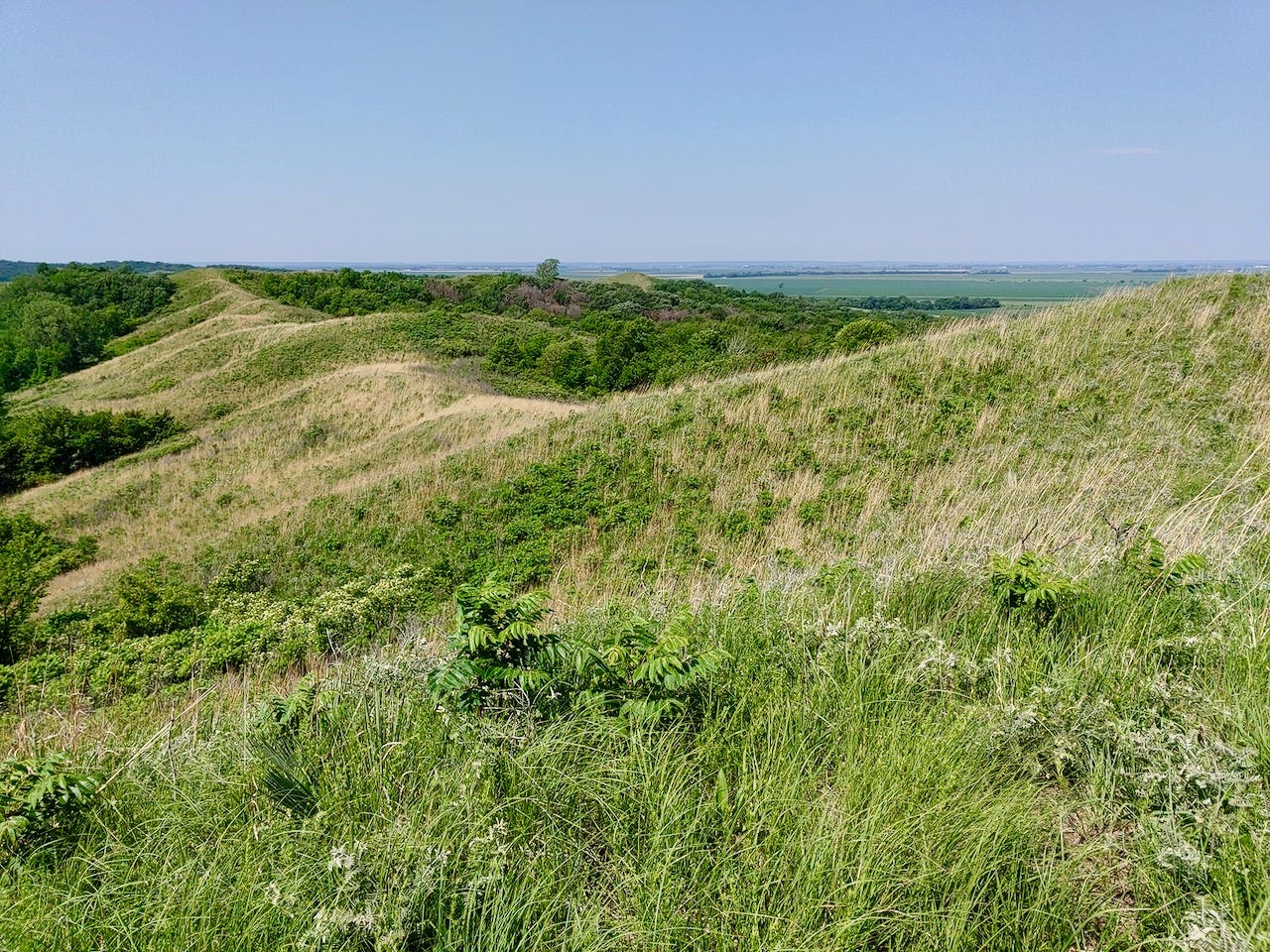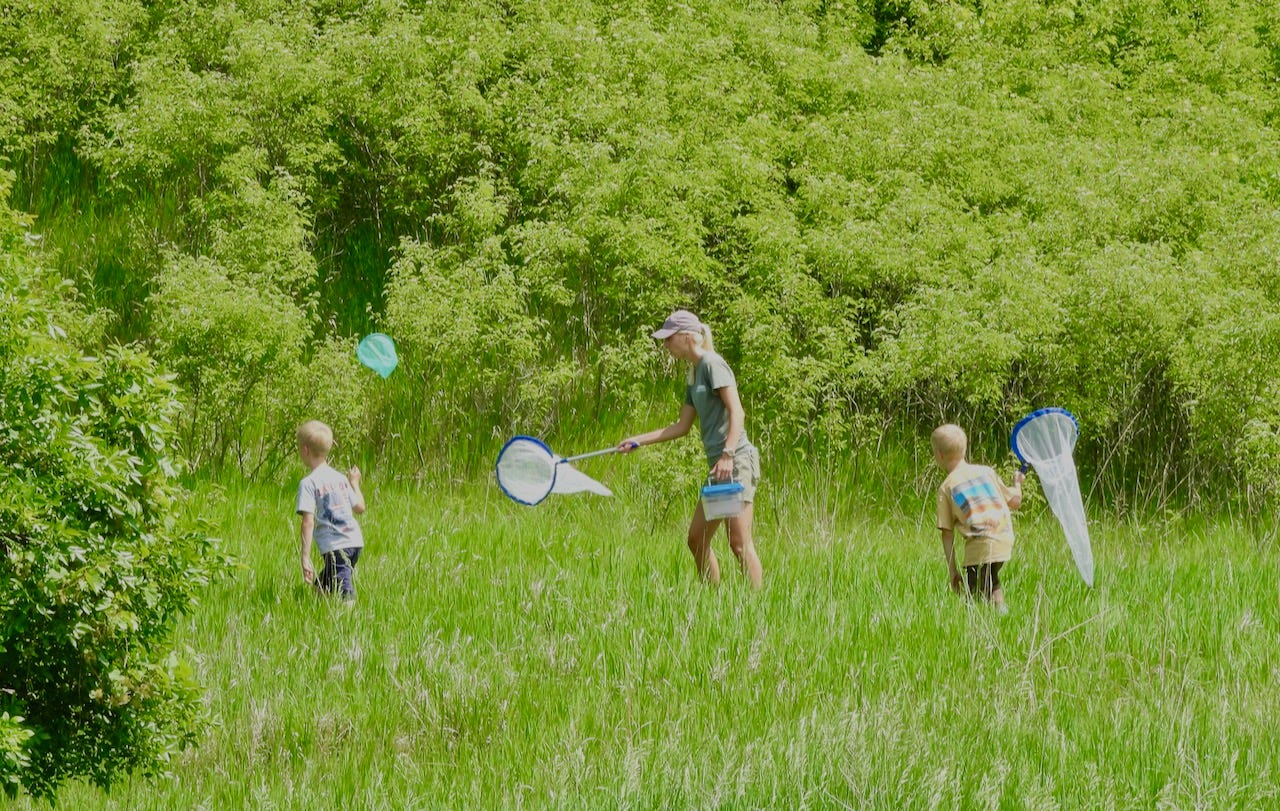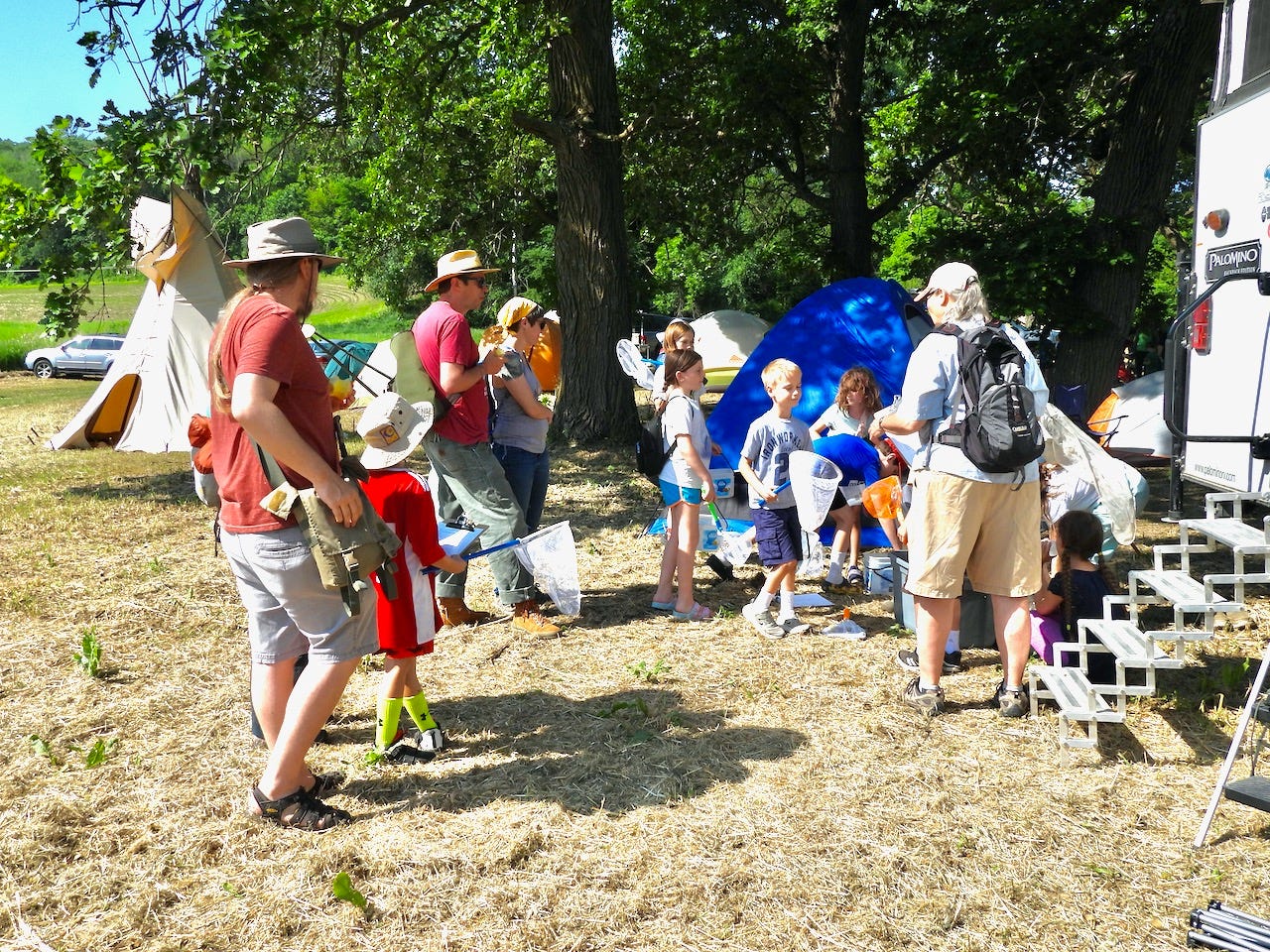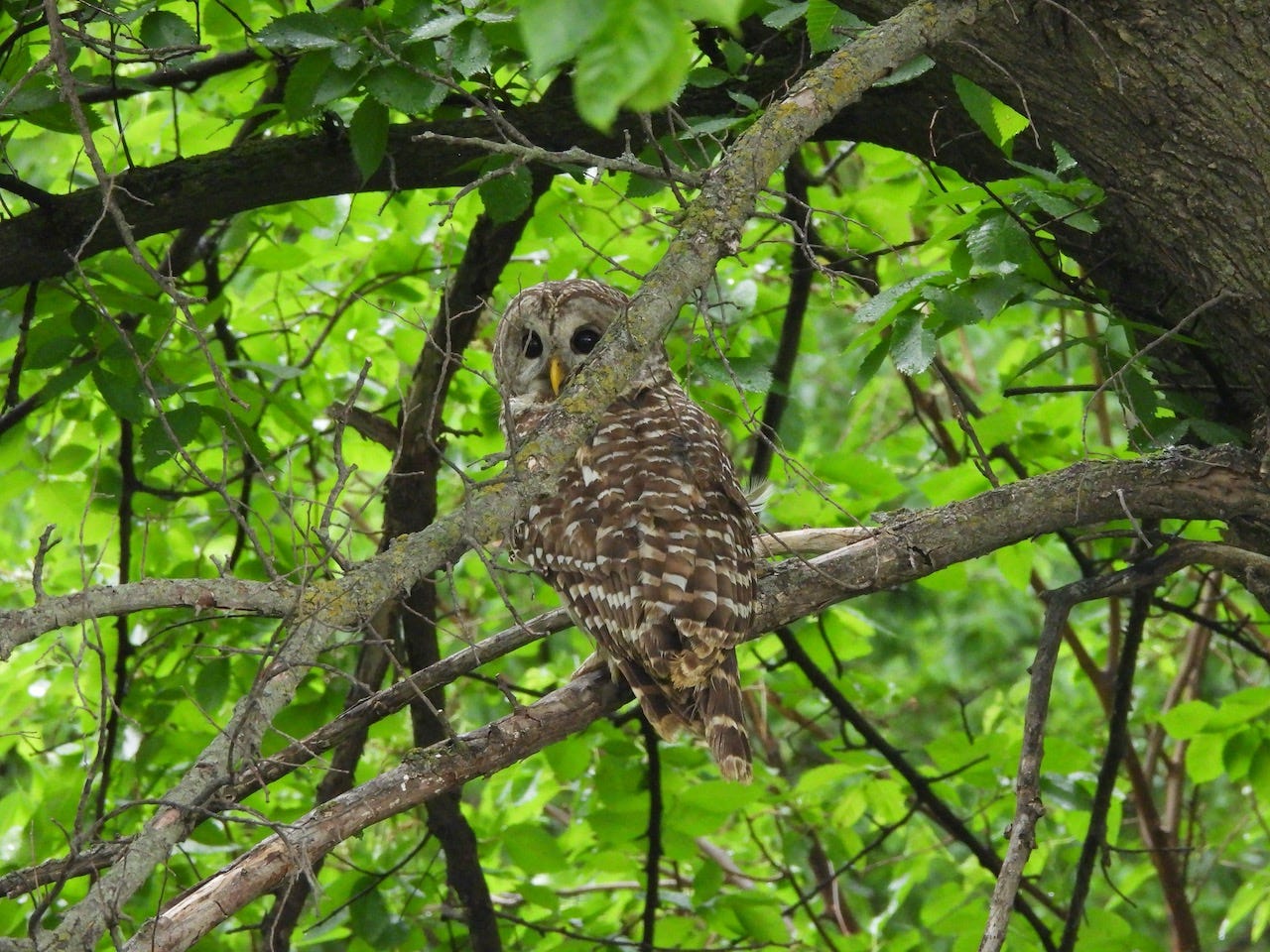The Hills glowed pink and orange as flames crept along the ridge in the dusk. From the safety of a gravel road, spectators watched in awe as biologists torched the dry prairie vegetation in an attempt to curtail the march of sumac, gray dogwood, bromegrass, and other species invading the Loess Hills prairie.
Iowa Department of Natural Resources (DNR) wildlife biologist Doug Chafa headed the 10-person burn crew. But the prescribed fire was just one – albeit the most spectacular – of more than two dozen activities and programs that recently lured about 200 people to the Loess Hills Wildlife Area, near Onawa, for the 46th anniversary Loess Hills Prairie Seminar. The event is hosted by the Monona County Conservation Board and the DNR, with support from a number of conservation groups and local businesses.
The focus is the unusual geological and natural history of “The Hills,” which were formed about 30,000 years ago by wind-blown soil piled on the eastern shore of the ancient Missouri River. The silt was deposited in the riverbed by water from glaciers melting during the summer. Winter cold dried up the meltwater, however, leaving the valley floor bare and exposed to fierce west winds that piled the “loess” into drifts as much as 200 feet high in what is now Iowa. Those Loess Hills support unique plant and animal communities.
Seminar participants wandered The Hills in search of yucca, locoweed, blue-eyed grass, prairie dandelion, skeletonweed, snow-on-the-mountain, and other prairie plants more often found farther west. They talked of rare and elusive spadefoot toads and prairie rattlesnakes. Whip-poor-wills serenaded the campers all night long. Coyotes and barred owls joined the chorus.
The family-friendly workshops found kids with butterfly nets dashing and laughing through the prairie grasses by day, then roasting marshmallows for s’mores around the campfire in the evening. Young and old alike marveled at up-close encounters with live snakes, turtles, frogs, and toads in a hands-on workshop with Doug Chafa and his daughter, Isabel. Volunteers from the Omaha Astronomical Society set up telescopes for star gazing, while the rising full moon created its own celestial show.
Camping under that moon, joining a morning yoga session, taking a bike tour, visiting a pioneer cemetery, or just sitting in the shade of 200-year-old bur oaks might not be unique to The Hills – but those activities still served as connections to The Hills.
Nebraskans Mark, Ed, and Lee Brogie – stalwart birders since nearly the first seminar – led early-risers on bird hikes. But even those who slept late had plenty of opportunities to see and hear dozens of bird species ranging from yellow warblers to Cooper’s hawks to dickcissels to yellow-billed cuckoos.
Drake University professor Dr. Tom Rosburg, who grew up in the Loess Hills, led a botanical exploration of the Sylvan Runkel State Preserve, which is named for the late Sylvan T. Runkel, a naturalist who was a favorite speaker in early years of the seminars.
Prairie ecologist Chris Helzer’s keynote address reminded environmentalists that while prairies often are threatened and disappearing, they also can be resilient.
The traditional seminar finale starred a barred owl released by wildlife rehabilitator Kay Neuman, director of Saving Our Avian Resources (SOAR.) Neuman also introduced the audience to a screech owl and a kestrel, whose previous injuries prevent their release, but allow them to be used in educational programs
Tyler Ruge, naturalist for the Monona County Conservation Board, who coordinated the seminar, welcomed many of the new faces and students who attended the seminar. His goal is to attract an even broader range of people in the future.
Sadie Lewman, of Omaha, Neb., an Iowa State University graduate with majors in industrial design and sustainability, vowed to help generate interest. She relished the outdoor education opportunities in The Hills.
“I’m hoping to be back next year with more people,” she declared
The Iowa Writers’ Collaborative now consists of 31 outstanding columnists. Please consider becoming a paid subscriber to those you wish to support. It is so appreciated.












Thanks so much! I love the Loess Hills! We need to preserve them as a national treasure.